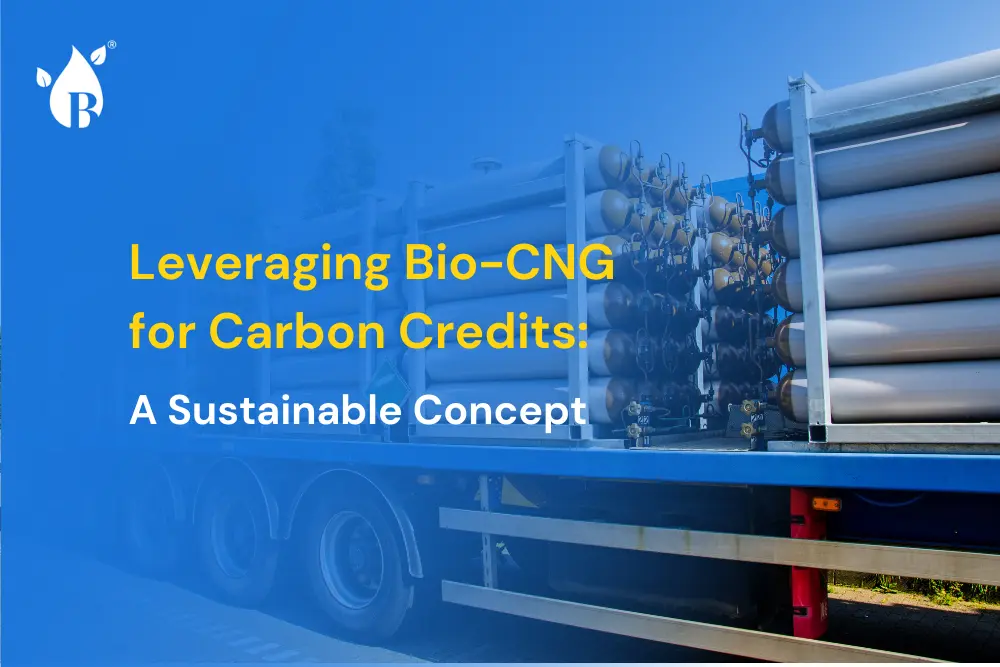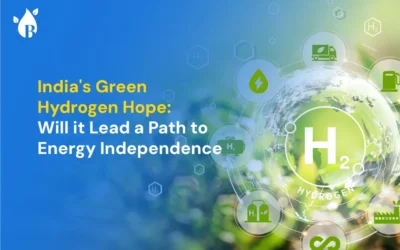The battle against climate change has reached a new frontier with the introduction of the Carbon Credit Trading Scheme 2023 by the Ministry of Power. This groundbreaking initiative marks a pivotal moment in India’s environmental strategy, aiming to combat climate change through innovative market-based mechanisms. One of the most promising avenues under this scheme is the production of Bio-CNG, a sustainable energy source that not only supports cleaner energy but also offers valuable carbon credits.
Understanding Carbon Credits
To grasp the significance of Bio-CNG in this context, it’s crucial to first understand carbon credits. These financial instruments are designed to mitigate greenhouse gas emissions and tackle climate change. Essentially, one carbon credit represents the reduction, removal, or avoidance of one metric tonne of carbon dioxide (CO2) or its equivalent in other greenhouse gases.
The concept gained traction through the Clean Development Mechanism (CDM) established under the Kyoto Protocol in 1997. This mechanism allowed countries to earn carbon credits by investing in emission reduction projects in developing nations, fostering a global effort to mitigate climate change.
Bio-CNG: A Sustainable Fuel with Carbon Credit Potential
Bio-CNG (Compressed Biogas) emerges as a significant project category eligible for carbon credits. Derived from the purification of biogas, Bio-CNG is a renewable alternative to conventional CNG (Compressed Natural Gas). Its production involves the anaerobic decomposition of organic materials such as municipal solid waste, agricultural residues, wastewater, and press mud. The resulting Bio-CNG shares similar properties with CNG and can be used for various applications, including vehicle fuel, electricity generation, and industrial processes.
The carbon credits earned from producing Bio-CNG range between 16 to 25 credits per tonne, depending on the feedstock used. Each carbon credit currently holds a value of $5 to $15 in the international market. For a Bio-CNG plant with a production capacity of 5 tonnes per day, this translates to an annual revenue between Rs 14,94,935 and Rs 4,48,41,071.
Success Stories and Market Potential
The potential of Bio-CNG as a carbon credit generator is substantial, particularly in developing countries. A prime example is the Indore Bio-CNG plant in India, which processes 550 tonnes of organic municipal waste daily. At full capacity, the plant produces 17,000 kg of Bio-CNG and 100 tonnes of organic compost. This plant fuels city buses and is estimated to earn around 130,000 carbon credits annually.
Carbon credits from Bio-CNG production can be traded in two distinct markets:
1. Mandatory Market: Utilized by companies and governments legally obligated to offset their emissions. This market is typically restricted to countries with emission reduction commitments under the UNFCCC framework.
2. Voluntary Carbon Market: Operates independently, allowing private enterprises and individuals to purchase carbon credits on an international scale. In India, the National Designated Authority for the Implementation of the Paris Agreement has recognized compressed biogas or Bio-CNG as a valid greenhouse gas mitigation activity, facilitating its participation in international carbon credit trading.
Environmental Benefits of Bio-CNG
Bio-CNG offers three major environmental advantages:
1. Reduced Greenhouse Gas Emissions: When used as a fuel, Bio-CNG emits significantly lower levels of greenhouse gases compared to traditional fossil fuels. Vehicles running on Bio-CNG emit only 120 grams of CO2 equivalent per kilometer (g CO2 eq/km), compared to 150 g CO2 eq/km for petrol and 140 g CO2 eq/km for diesel.
2. Effective Waste Management: Bio-CNG production contributes to waste management by converting organic waste into clean energy. This process reduces waste
3. Organic Fertilizer Production: The by-product of Bio-CNG production, fermented organic manure or slurry, serves as an excellent organic fertilizer. It enriches soil carbon content and is less polluting compared to chemical fertilizers.
Challenges and Opportunities
Despite its potential, the Bio-CNG industry faces several challenges. The current carbon credit methodology primarily emphasizes the clean energy aspect of Bio-CNG, often overlooking its waste management and organic fertilizer benefits. Expanding the methodology to include these components is crucial for maximizing the environmental and economic impact of Bio-CNG production.
The lack of clear guidance on accumulating carbon credits for Bio-CNG plants also creates uncertainty for entrepreneurs. It is vital to disseminate knowledge about carbon credit mobilization within the Bio-CNG sector to ensure its success and profitability as a green energy source.
Case Study from Down to Earth: Indore’s Bio-CNG Plant
Devguradiya, previously a notorious landfill site, has been transformed into a model for waste management and energy production. This facility processes substantial amounts of municipal solid waste and highlights the potential of Bio-CNG to tackle environmental issues while generating valuable carbon credits.
Bio-CNG, also known as Compressed Biogas (CBG), is an enhanced form of biogas. By compressing it at high pressures, Bio-CNG achieves similar chemical properties to CNG derived from petroleum. This gas is then distributed to filling stations for use in vehicles. Despite its promising environmental and economic benefits, the industry has faced slow adoption. To understand the barriers, we can examine the challenges encountered by the Bio-CNG plant in Indore, which is the largest facility of its kind in Asia, while the largest facility overall is located in Punjab.
The site, Devguradiya, was once a dumping ground for nearly 70 years, contributing to high particulate matter pollution and unpleasant odors from hydrogen sulfide (H2S) and ammonia. While the landfill has been replaced with a city forest and the Gobar Dhan Bio-CNG plant, the lingering smell of decomposing waste still affects the area.
The Gobar Dhan plant, occupying 15 acres and funded with an investment of Rs 150 crores, processes 550 tons of the city’s 700 tons per day of biodegradable waste. It aims to enhance air quality by reducing 130,000 tonnes of carbon dioxide annually. Established by the Indore Municipal Corporation (IMC) in collaboration with Ever Enviro Resource Management Pvt Ltd, the plant has a contractual obligation to receive 90% of segregated waste from the city. IMC compensates the plant with an annual royalty of Rs 2.5 crores and purchases Bio-CNG at a rate Rs 5 lower than the market price for fueling its 146 buses. By switching from diesel to CNG, the IMC has already earned Rs 8.5 crores in carbon credits. Additionally, half of the produced gas is sold to Avantika Gas Ltd, a local CNG and PNG supplier, at Rs 56/kg.
In addition to Bio-CNG, the plant produces 15 tons of carbon dioxide and 100 tons of organic manure daily. Although plans are underway to bottle the CO2 for industrial use, the manure is currently sold at Rs 1,800 per ton. There is also a proposal to inject the compressed biogas into Avantika’s city gas distribution network through a pipeline. This initiative aims to lower gas compression costs, reduce emissions from transportation, and benefit the 163 industries in the city.
Despite these advancements, Gobar Dhan faces its share of challenges. As a pioneer in Bio-CNG technology in India, the plant must navigate obstacles and draw from its own experiences to advance this emerging technology.
Bio-CNG stands at the intersection of sustainable energy and carbon credit generation, offering a viable solution to both waste management and climate change. As India progresses with its Carbon Credit Trading Scheme 2023, leveraging Bio-CNG’s potential can play a pivotal role in achieving emission reduction goals. Expanding the scope of carbon credit methodologies and enhancing knowledge dissemination will be key to unlocking the full benefits of Bio-CNG in the fight against climate change.




